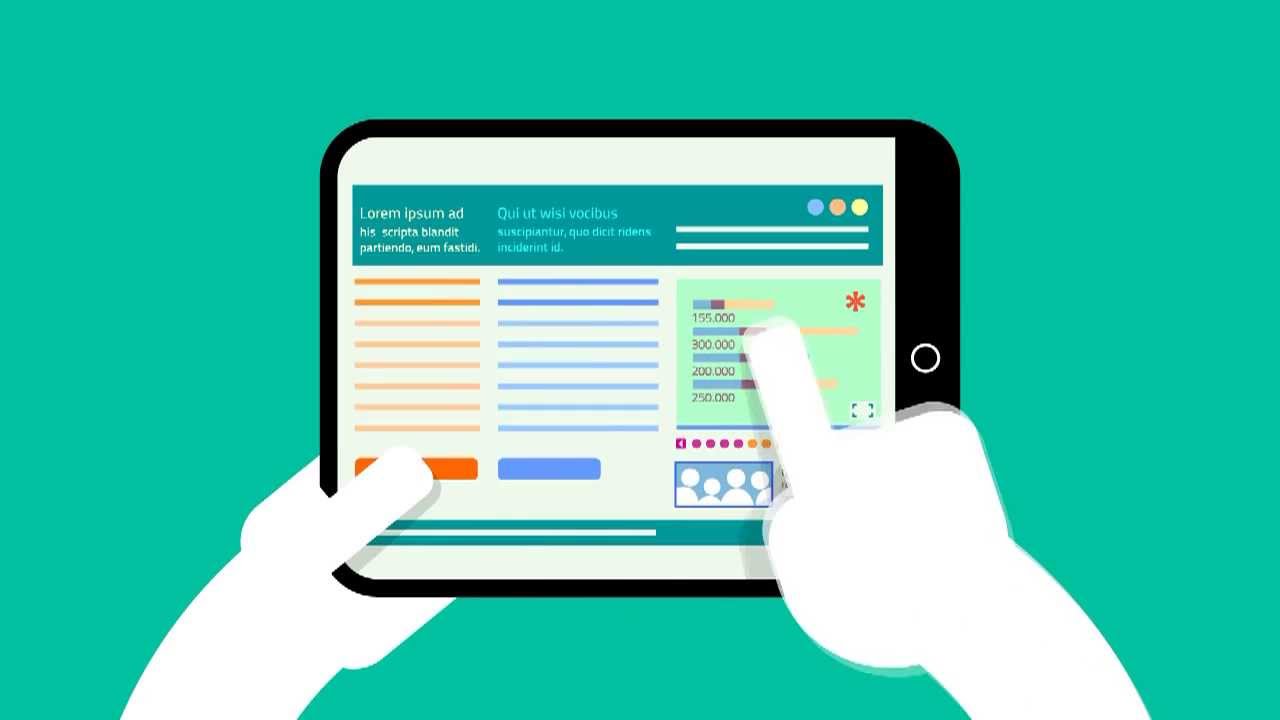We have all seen mobile apps and websites where the designer’s focus was to create something that “looks cool” but unfortunately paid no attention to designing an interface that was easy to use. This is a common mistake for young designers, where they use every opportunity to try and show off the various skills they have learned.
Design veterans, on the other hand, understand that it is better to keep interfaces simple and easy to use. Users tend to respond better to simple designs in A/B tests, increasing the number of conversions, as well as increasing the average amount per order.
The key to increasing conversion rates is to approach each project with a focus on the customer. With user-centered design, designers will create interface designs that are based on the wants, needs, and limitations of users.
Generally, with user-centered design, a designer will start a project by developing an understanding of how users are interacting with a business’s current website or mobile app. Based on information learned from user feedback, user interviews, and other sources, they can improve the website or mobile app’s structure, interface and content to make it easier and more enjoyable to use.
One of the goals of user-centered design is to make it easy for users to navigate a website or mobile app. This way, they can find the information or activity they’re looking for simply and quickly. It should be easy for users to engage and interact with your user interface. Websites and mobile apps that are easy to use are far more likely to convert.
This is done by a variety of techniques, such as simplifying common tasks, as well as, highlighting important features, creating a well-thought out information architecture, and designing intuitive navigation that will help engage users rather than frustrating them and turning them away.
Below are some tips on how to design interfaces that users will enjoy using.
Streamline the path to conversion
When users first land on your website or download and open your mobile app, they begin a path to conversion. This path may be made up of a few or several steps and users are free to stop this process at any time.
You want to avoid users abandoning your website or mobile app. Whether it is due to being confused and frustrated or simply getting distracted, you want to keep users on the path until they convert. One of the best ways to do this is by keeping the path as short as possible. Similarly, the steps should be easy to complete. Decrease the number of steps and make them easy to complete to increase conversions.
Eliminate obstacles
A user-centered design approach will try to eliminate obstacles that users are currently encountering. If the current app or website is creating confusion, doubt, or frustration, you should work to fix the issues that are causing these feelings.
You want to keep the mental effort required by a user to use your interface to a bare minimum. You don’t want users to have to stop and think about what to do to be able to proceed. Conversions are much more likely if you give your customers an intuitive experience where they don’t have to jump over mental hurdles to accomplish tasks.
Eliminate clutter
We have spoken with many clients that think adding more and more features is the way to impress users, the fact is, the opposite is usually the truth. Users will typically use a small number of the functions available on an app or a website and generally see the rest as clutter and would prefer if they were removed. By eliminating rarely used and unnecessary features and content it helps reduce the mental strain on users.
The removal of visual elements and graphics that aren’t there to facilitate the user journey will also help improve the user experience. You want to show users only what they need to see to complete their intended task and the rest is clutter. Remove anything that doesn’t add value to their experience. Reducing the number of distractions in this way can help improve conversion rates.
Write simple, clear content
These days, people tend to scan content and will be turned off if they get to a website or mobile app and are presented big, solid blocks of text. Big, solid blocks of text seem like work to users and they will get in the way of conversions.
Keep your content brief and to the point, utilizing a conversational style that is easy to read. Where it is possible, feel free to use an image to convey a message. Visual content can be understood quickly and help improve the experience. Make sure you understand who your users are and create content for them, utilizing an appropriate tone to go with word choices that will reach your audience. Try to match the typical language used by your users, the language you would use on a tech oriented website would be quite different from the language you would use for a novelty gift store website.
Use visual design to enhance the experience
When it comes to visual design you want to make a great first impression. Your design should invite users to keep moving forward rather than pushing them to abandon the experience. In less than a second, users will decide if your website is worth using, so you want to make sure you impress users from the very first instant.
At the same time, you don’t want the “wow” factor of your visual design to get in the way of the user experience. Usability is of paramount importance. A user-friendly layout will entice users to spend more time on your website or mobile app, which will help your conversion rate improve.
Make sure you use design to promote users acting on your call-to-action. Make it clear and clickable with plenty of white space surrounding it. You don’t want to make users work to take action. Keep it simple and easy to use.
Final thoughts
Users want interfaces that are logical and intuitive, with a design that supports the experience rather than getting in the way of it. Design with careful attention to details such as placement and spacing can help facilitate user actions and increase conversion rates. While your design needs to resonate with users, you should make sure you keep an eye on usability and focus on meeting user needs.
Samella Garcia works as an Integration Manager for Vanity Point. She has 8 years of experience developing mobile applications and web sites that focus on UX. Samella has a passion for user experience projects, coding, digital technology and hiking. LinkedIn Profile | Facebook Profile






















































































































































































